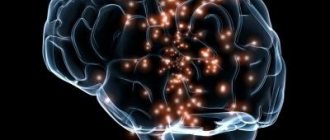Author Tatyana on 06/07/2015. Published by Personality Psychology Last updated: 06/07/2015
Humanistic psychology emerged in the 1950s as a reaction to psychoanalysis and behaviorism, which were dominant at the time. Psychoanalysts focused on understanding the unconscious motivations that drive behavior, while behaviorists studied the conditioning process they believed determined behavior. Humanistic thinkers believed that both psychoanalysis and behaviorism were too pessimistic because they emphasized negative emotions and did not take into account the role of personal choice.
Humanistic psychology focuses on the potential of each person and emphasizes the importance of growth and self-actualization. Fundamental to humanistic psychology is the belief that people are good by nature and that it is mental and social problems that lead to deviations from this natural tendency.
Humanism also assumes that man is characterized by agency and that through his will he pursues goals that will help him realize his own potential. This need for self-actualization and personal growth is a key factor in motivating behavior, from the point of view of humanistic psychologists. People are constantly looking for new ways to grow and become better people, learn new things, and realize their potential.
In the late 1950s, Abraham Maslow and other psychologists organized several meetings to discuss the possibility of forming a professional organization dedicated to a humanistic approach to psychology. They agreed that themes such as self-actualization, creativity and individuality, and related issues, should be key to the new approach. So, in 1961 they created the American Association of Humanistic Psychology.
In 1962, Abraham Maslow published Toward a Psychology of Being, in which he described humanistic psychology as the “third force” in psychology. The first and second were behaviorism and psychoanalysis, respectively.
However, you should not think of these areas as competing with each other. Each branch of psychology contributes to our understanding of the human mind and behavior. Humanistic psychology added another aspect that made the idea of personality holistic.
The humanistic movement had a huge impact on the development of psychology and contributed to the emergence of new approaches to working with human mental health. Psychologists began to gain a new understanding of human behavior and motives, which led to the development of new methods of psychotherapy.
The main ideas and concepts within the humanistic movement include such concepts as: self-esteem;
- hierarchy of needs;
- unconditional positive regard;
- free will;
- client-centered therapy;
- self-actualization;
- fully functioning personality;
- peak experiences, etc.
What kind of approach is this
In the 20th century, the ideas of behaviorism dominated. They viewed the individual from the point of view of dependence on external stimuli. Specialists in the field believed that human behavior is not much different from the behavior of animals.
The humanistic approach in psychology is contrasted with the natural scientific one. It does not have clear formulations; it is based on philosophical reasoning. The works of scientists of the Enlightenment era, eastern and religious systems, and the existential works of philosophers made it possible to approach the consideration of the human psyche from a different angle.
The movement does not have a single founder. Maslow, Rogers and other specialists joined this trend. The new direction is based on the belief that a person has a certain degree of freedom from the outside world.
Important! The presence of meaning and a value system distinguishes people from animals.
Unlike psychoanalysis, the views of humanistic psychologists are more optimistic. Experts believed that a person has the ability to develop, be creative, and be active.
Existentialism defines the postulate that life is a single process of human formation and existence. Experiences about place in the world are a psychological reality.
The humanistic direction in psychology made it possible to form a new movement in psychotherapy. A person-centered approach and logotherapy appeared. Many techniques remain relevant to this day.
In pedagogy, the humanistic approach made it possible to change the attitude towards students from authoritarian to partner
New views made it possible to change psychology. The direction gained particular popularity in the 80s of the last century. It is in demand in Western countries.
Subject of study and tasks of science
The humanistic direction studies options for human creative development and self-improvement throughout life. The subject of study are:
- interpersonal relationships;
- autonomy;
- mental health;
- Liberty;
- Love;
- responsibility;
- self-actualization.
This science has a number of tasks:
- studying the stages of personality degradation;
- searching for oneself;
- search for the meaning of life;
- awareness of self-worth.
Psychologists believe that the humanistic school appeared under the influence of several factors:
- summit experiments;
- ideas of liberation, Zen Buddhism;
- group dynamics;
- expending drag;
- doctrines of actualization;
- unity of opposites - Yin-Yang;
- tantric ideas;
- centering on the individual.
Strengths of the scientific direction:
- Science pays a lot of attention to managing your own mental health and determining your condition.
- Researchers take into account the impact of environmental factors on behavior and changes in a person’s condition. Humanistic psychology emphasizes the importance of desires and thoughts.
- Science helps healthy people explore their own potential and evaluate their abilities.
- This direction has a positive impact on the development of healthcare and education.
Humanistic psychology cannot be called an ordered field of scientific knowledge. It represents a complex of metaphysical concepts
Principles
Psychoanalysis by S. Freud - brief and clear
The founders of humanistic psychology developed their own theories that had some common points. It was these contacts that made it possible to identify several principles:
- Man always strives for development. He has an innate need for self-actualization, self-realization, and self-improvement.
- Integrity is a personality, a complex open system.
- Humanity – every individual is naturally free and kind.
- Target determinism - personality traits need to be studied taking into account its future aspirations.
- Activity - another person is a separate living being who has the right to choose how to act. No psychotherapist can do this for him, only help.
- Not an experimental study of personality - a person must be considered as a single system; it is impossible to study a separate part of his psyche.
- Representativeness – only healthy and healthy individuals can be studied.
The founders of the humanistic trend in psychology are different people: Maslow, Rogers, Reich, Perzl and others. Each of them contributed to the development of the new school. For example, Reich developed the idea that unexpressed emotions lead to the appearance of muscle tension.
Maslow's motivational theory has become widespread in marketing. Its main ideas have found practical application.
History of formation
In the first half of the last century, many psychological schools appeared. Each of them tried to explain all phenomena within a single system. In the late 1950s, humanistic psychology emerged in the United States, with the help of which specialists tried to build a new methodology for studying humans, rather than continuing to use a scientific mechanistic approach.
Bugental compared this discovery to the collapse of feudalism and the advent of electricity. Many European schools also tried to move to a humanistic approach, although they first started talking about it in the USA. In 1962, the journal “Humanistic Psychology” was published. It has become an independent branch in science. The development of new techniques was accompanied by mass protests and demonstrations in defense of civil rights.
During the 1960s and 1970s, a new type of psychology flourished . And in 1971, Stanley Kripner performed in the USSR. He talked about common principles with Soviet psychology, spoke about the same views on the potential creative capabilities of a person. In Russia at this time, an activity-based approach similar to humanistic issues was developing. New concepts were formed in its wake, but they did not contradict the old ones.
In 1983, a cooperation project between the USSR Academy of Pedagogical Sciences and the AGP was founded. Although several representatives of humanistic psychology died during this period, a delegation came from the United States to exchange scientific experience. Lectures were given in Moscow, Leningrad and Tbilisi.
Strengths
Gestalt psychology - what is it in psychology briefly
Not all psychologists supported the new views. Many were skeptical about them due to insufficient evidence base. Over time, it was possible to identify a number of advantages of the new school.
The humanistic direction influences all areas of life
The main advantage is the recognition of a person’s ability to control his psyche. Adherents of this direction are also sure that the individual is influenced by the environment. School representatives were able to overcome many stereotypes about psychotherapy.
For example, the myth that a psychologist has a limited range of methods of influence. With the help of a humanistic approach, a person can relieve nervousness and improve his life.
Techniques used
There are several methods in humanistic psychology. Which ones are relevant, each client decides independently. This allows you to reveal a person’s individuality and understand his self-perception. Since the emergence of the new school of psychology, many methods of working with clients have been developed:
- tests;
- visualization;
- art therapy (the most popular today);
- psychodrama;
- Eastern techniques - yoga or meditation;
- existential therapy;
- transactional analysis.
K. Rogers invented another method - non-directive. Its characteristic is to show kindness towards the client . Since kindness is inherent in everyone at the genetic level, it is necessary to bring it out. To do this, you need to create certain conditions during the consultation in which a person can open up.
The session should be conducted in the form of a dialogue so that the individual does not find himself in the position of a student or subordinate. The function of a psychologist in such classes is to encourage open conversation and self-expression.
This way the client will be able to quickly get to know himself and learn to perceive the world around him adequately.
Although the nature of personality cannot be completely determined, a person's behavior and emotions can be studied. Psychology allows you to unlock potential and show an individual that he can make decisions independently and characterize himself.
Supporters
Important ideas have been developed by a number of specialists. One of the founders, Carl Rogers, believed that every person has self-actualization, i.e. trend towards growth and development. The scientist compared people with plants. The flower does not wonder whether it needs to grow - it grows.
Reverse psychology
Development occurs only under one important condition - the work of the self-concept. It is formed through interaction with the outside world. Sometimes a person has different ideas about his real and ideal self, the conflict of these parts leads to the inclusion of psychological defense.
The basis of Rogers' ideas is a focus on the problems of the individual. It was this specialist who suggested conducting sessions in a confidential atmosphere and pointed out the importance of empathy. He had to study the defense mechanisms of the psyche.
Maslow also made significant contributions to the development of the approach. His theory is based on the belief that every person has a pyramid of needs. It is based on basic needs: nutrition, quenching thirst, sleep.
After these needs are realized, the second stage begins – the safe one. On it, a person satisfies the need for health, safety, and stability. Next, the individual realizes the need for recognition, belonging, and self-expression.
Important! The hierarchy of needs is an understandable system of values that allows a person to gradually develop.
Frankl developed a theory he called logotherapy. Its subject was the idea that a person strives to find the meaning of life. In the absence of such an opportunity, the individual experiences negative feelings and frustration.
Depression and apathy develop against the background of missing meaning in life
Reich was initially an adherent of the ideas of psychoanalysis, he was one of Freud's students. Over time, he abandoned them and developed his own theory. His teaching was based on the belief that problems, neuroses, and suppressed emotions lead to muscle tension. You can correct them with the help of special exercises.
Identifying problem areas is also considered by Reich. To do this, he developed various techniques that teach a person to listen to his feelings.
A brief listing of the ideas of the founders of the new approach allows us to better understand their innovation. Today, the direction continues to actively develop. New supporters start from old theories, and they also develop new views.
Integrity concept
One of the most important ideas of humanistic psychology is to consider the individual as a unique whole. Already Maslow saw that psychologists for a very long time focused on a detailed analysis of individual events in a person's life, neglecting his integrity. They studied the trees, not the entire forest. In fact, the theory that was first developed by Maslow and developed by his followers was a protest against such views, originating from behaviorism. The principle of the whole, which is always greater than the sum of its parts, is accurately reflected in many theoretical works of researchers in this direction.
Criticism
Humanistic psychology is a popular, but not universal, direction. During its short existence, representatives of the school repeatedly faced criticism of their ideas.
Some scientists believe that the approach is very subjective. The personal experience of a specialist is of great importance, which interferes with objective perception. For example, it is impossible to say unambiguously whether an individual has undergone self-actualization or not.
The creation of different theories allowed the formation of new concepts, for example, self-actualization or self-concept. Such an abundance of terms can complicate research. Most techniques are based on theoretical concepts. In this case, it is difficult to verify their validity.
Some experts believe that the approach of Western psychologists is not suitable for the whole world due to the peculiarities of the national mentality. In the eastern territories, it is customary to put society at the head of the whole, and not the individual.
Modern psychologists also believe that the new representatives of the humanistic movement extol the idea of arrogance. They believe that a person should be valuable, but this does not take into account one fact: the individual lives among people. Therefore, other people's boundaries must also be respected.
Despite criticism, many psychologists prefer to work in a humanistic direction. This approach allows them to understand the value of human life.
Self-actualization by A. Maslow
Maslow conducted counseling for mentally mature adults. He called them the growing elite of society. The scientist’s research was influenced by many famous personalities:
- M. Mead;
- A. Adler;
- E. Fromm;
- K. Horney;
- M. Wertheimer;
- K. Goldstein.
His studies were varied: observation of primate behavior, anthropological research, and studies of female sexuality. Maslow preferred to work only with healthy people.
He paid special attention to motivation and considered it as a driving force for development. The need of a person to become someone is an innate quality, but a person does not realize this until he finds himself in suitable conditions. The main condition is the satisfaction of all needs. But if a child was deprived of attention and love in childhood, then in adulthood he will be able to do without them.
Self-actualization has its pros and cons . The positive side is expressed in independence from the surrounding world, and the negative side is that the personality in the process of evolution may lose some qualities. Because of this, mental pathologies develop. Maslow believes that the main characteristic of a healthy person is detachment from the opinions of society. You need to evaluate your behavior yourself, and not relying on the judgments of others.
The scientist explained the role of psychotherapy. There are no limitations to this treatment method, but it is necessary to correct emotions and behavior. The doctor will not be able to restore the qualities lost by the individual in childhood. That is why parents have a serious task, because upbringing has a huge impact on the further development of the child.
Abraham Maslow added a lot of new things not only to the field of psychology. Thanks to him, methods of marketing, management, interpersonal relationships, and criminology were improved.
Practical use
It can be difficult for a potential client to choose which school to contact. An adherent of the humanistic approach is interested in the client’s inner world in as much detail as possible.
The specialist’s task is to work with the feelings of a particular person. For this, the psychologist has empathy, patience, and attentiveness. He works with the contradictions of the ideal self and the real self, and knows how to behave tactfully.
The basic principles of the humanistic approach have found wide application in pedagogy. With the help of techniques, the teacher builds relationships with students and helps them develop creative abilities.
The ideas of Rogers and Maslow are used in psychological trainings
The diverse application of humanistic ideas makes it possible to make the movement very popular, especially in the West. His basic ideas are used in other schools. For example, the importance of creating an environment of trust came from Rogers.
Concept
Humanistic psychology is a direction that analyzes concepts that are unique to humans - creative activity, self-actualization of the individual and its development, highest human values, love, freedom.
The basis is the humanistic qualities of the individual, which distinguish a person from an animal, and also contribute to his improvement throughout his life.
Humanistic orientation is the moral qualities of an individual that determine his behavior in accordance with humanistic ideas. First of all, this is recognition of the value of the human person, its exclusive rights to development and well-being.
These qualities mean a complex of character traits such as a person’s tolerance for others, the desire to help them, kindness, respect for another person, and understanding.
Video
Drill-driver DEKO GCD12DU3 Li-ion, 1x1.5Ah, Replaceable battery, 12 V, 32 Nm, 1 battery
1697 ₽ More details
Drill/driver DEKO DKCD16FU Li-ion in case + 63 accessories, 2x1.5Ah, Replaceable battery, 16 V, 32 Nm, 2 batteries
3168 ₽ More details
Dior perfumes for women
The use of psychoanalysis in psychology
The method of psychoanalysis is based on three main elements, which fully reveal the entire concept of this teaching. The first element is a kind of stage at which material for study is collected. The second element involves careful study and analysis of the data obtained. The third element is interaction using data obtained as a result of analysis. Various techniques are used to collect information, including the method of confrontation, association and transference.
The method of building free associations is based on creating a model of situations that exactly repeat certain life events. This approach allows us to identify certain processes occurring at the unconscious level of the psyche. The use of this method makes it possible to obtain data on pathological processes for the purpose of further correction of mental disorders. Correction is carried out through awareness of internal conflicts and the causes of their occurrence. One of the important conditions for using this method is the creation of a strong communicative connection between the psychologist and the patient, aimed at eliminating psychological discomfort.
Psychoanalysis studies the internal, emanating from the subconscious, driven by instincts and the principle of pleasure, human tension
To do this, the patient must voice every thought that arises in his head. These thoughts may be obscene or borderline absurd. In order to achieve a high result, it is necessary to create the right connection between the doctor and the patient. The transference technique involves the unconscious transfer of the characteristic personality traits of the patient’s parents to the attending physician. Thus, the patient treats the doctor in the same way as he treated close relatives in early childhood. At the same time, the substitute person gets the opportunity to identify childhood desires, grievances and psychological trauma received during the formation of personality.
It is important to pay attention to the fact that psychotherapeutic intervention often encounters the phenomenon of internal resistance emanating from the patient. It manifests itself in the form of a refusal to comprehend cause-and-effect relationships and a disruption in the process of creating a new model of behavior. The reason for resistance is an unconscious refusal to deal with internal conflicts, which is accompanied by the appearance of obstacles to identifying the causes of mental disorders.
The reason for resistance is an unconscious refusal to deal with internal conflicts, which is accompanied by the appearance of obstacles to identifying the causes of mental disorders.
The main task of personality analysis is to perform four sequential actions:
- interpretation;
- working off;
- clarification;
- opposition.
Further, the joint efforts of the patient and the psychologist are directed towards achieving a specific goal, which was identified as a result of the analysis. The technique of dream interpretation involves the interpretation of dreams, which are a deformed form of unconscious motives.











